Did the 1973 shooting of Governor George Wallace lead to the 1981 shooting of President Ronald Reagan?
Well, yes, more or less. Read on for the strange tale of The Taxi Driver Connection.

Alabama Governor GEORGE WALLACE was a candidate for the 1972 Democratic presidential nomination when he was gunned down at a campaign rally by a deranged loner named ARTHUR BREMER. Bremer was a 21 year-old from a broken family. His failed relationship with a 15 year-old girl, Joan Pemrich, sealed his determination to prove his own manhood by shooting either Wallace or President RICHARD NIXON. (In his diaries Bremer imagined being ranked with John Wilkes Booth, the killer of Abraham Lincoln.)Bremer actually attended Nixon political rallies, gun in hand, but finding security tight he shifted his sights to Wallace. Bremer stalked the Alabaman across the East Coast before blasting five shots at close range at a shopping center rally in Laurel, Maryland. Wallace survived but was paralyzed from the waist down. Bremer, instead of being killed in a hoped-for blaze of glory, was wrestled to the ground by bystanders. He was found guilty of attempted murder and sentenced to 53 years in prison.
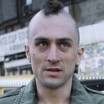
Four years later, Bremer’s strange tale helped inspire MARTIN SCORCESE‘s 1976 film Taxi Driver and its creepy anti-hero Travis Bickle. As played by ROBERT De NIRO, Bickle is a New York loner whose grand delusions and friendship with a Iris, a 12 year-old prostitute, echo Bremer’s life. Bickle finally sinks into Bremer-like madness, stalking a presidential candidate with gun in hand. Blocked by the candidate’s security men (shades of Bremer-Nixon), Bickle is forced to change his plans. Instead of the candidate, he shoots up Iris’s pimp and one of her customers, and — ironically — becomes a public hero.
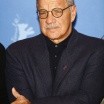
Taxi Driver was written by PAUL SCHRADER, no stranger to tales of grim obsession. (He later wrote and directed 2002’s Auto-Focus, dissecting the secret antics of Hogan’s Heroes star Bob Crane.) Taxi Driver was Oscar-nominated for best picture, best actor (DeNiro) and best supporting actress (for 13 year-old JODIE FOSTER, who played Iris). The film also included one of the most famous film scenes of the 1970s: the gun-toting Bickle posing in front of a mirror and sneering at an imagined foe, “You talkin’ to me?”
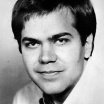
One person who missed the irony in Taxi Driver‘s message was JOHN HINCKLEY, JR. An underachiever from a well-to-do family in Colorado, Hinckley saw the movie more than a dozen times, and by 1980 had lapsed into his own strange fantasy world. He developed an obsession with Jodie Foster, seeming to feel that he was meant to protect Foster the way Travis Bickle ‘protected’ Iris in the film. By this time the actress was a student at Yale University, where Hinckley left letters for her and contacted her twice by phone.
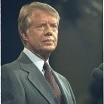
Frustrated in his attempts to court Foster, Hinckley decided that the way to impress her was to assassinate President JIMMY CARTER — a duplicate of Arthur Bremer’s own notion, filtered through Travis Bickle and Taxi Driver. Like Bremer and Bickle, Hinckley failed to get his first target: he was arrested late in 1980 when guns were found in his luggage at the airport at Nashville, where Carter was campaigning against Republican candidate RONALD REAGAN.Hinckley was released and underwent psychiatric evaluation in his home state of Colorado. (By melancholy coincidence, this was the period when Mark David Chapman shot musician John Lennon.) In 1981 Hinckley returned to Washington, D.C., where Reagan had replaced Carter as president.
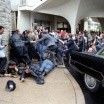
On March 30, 1981, after writing a final letter of devotion to Foster, Hinckley went to the Washington Hilton, pulled a revolver and shot Ronald Reagan as the President left the hotel after giving a speech. Hinckley’s bullets nearly killed the president, and wounded press secretary James Brady, Secret Service agent Timothy McCarty and DC police officer Thomas Delahanty. Reagan was rushed to a hospital and saved by emergency surgery.At a jury trial the next year, Hinckley was ruled not guilty by reason of insanity. Hinckley was sent to St. Elizabeth’s Hospital in Washington, D.C., a patient rather than a prisoner; he was found to have “narcissistic personality disorder” and other mental illnesses. His repeated requests for release have been fought by government attorneys, and he remains at St. Elizabeth’s more than two decades after shooting Reagan.(Photo: Chaos follows the shooting of President Ronald Reagan by John Hinckley in 1981. The wounded president has already been rushed into his limousine; Hinckley is hidden in a mob of police and Secret Service agents. Photo from the Ronald Reagan Presidential Library Archives.)
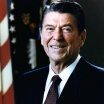
President Ronald Reagan recovered from his injuries and completed two terms as president before falling prey to Alzheimer’s Disease. Press secretary James Brady, critically wounded alongside Reagan, became a public advocate for gun control.

Jodie Foster graduated from Yale in 1985 and grew into one of Hollywood’s leading stars, winning an Oscar as an FBI agent aided by a criminally insane killer in The Silence of the Lambs (1991). Scorsese made Raging Bull (1980),Goodfellas (1990) and other acclaimed films, many of them starring Robert DeNiro.

Paralyzed for life from the waist down, George Wallace was elected to two more terms as Alabama’s governor. In the last years of his life, he rejected his segregationist past and became a figure of racial conciliation. Richard Nixon won re-election in 1972, only to resign in shame in 1974 in the wake of the Watergate scandal. Jimmy Carter, defeated by Reagan in 1980, won the 2002 Nobel Peace Prize for his works after leaving the presidency.
(Photo: George Wallace, in a wheelchair, at a campaign rally for President Gerald Ford in 1976. Photo by Thomas J. O’Halloran from the U.S. News and World Report Magazine Photograph Collection at the U.S. Library of Congress, Prints and Photographs Division. LC-DIG-ppmsca-08527)

